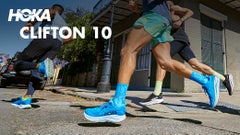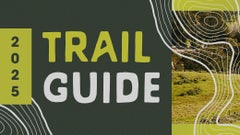The Best Stretches for Runners to Do After a Run
By Alexandra Andersson, D.C.

The Importance of Stretching for Runners
Stretching your muscles after your runs has many benefits, including improving your flexibility and performance, avoiding injury, and preventing lactic acid buildup. Doing gentle stretches after exercise not only helps to increase your range of motion but also increases blood flow to your working muscles, which accelerates post-run recovery. Stretching consistently after running helps to alleviate soreness and keeps you ready for your next workout.
How To Get the Most Out of Your Stretching
Whether you're stretching to become a better runner or to avoid pain and injury, it's important to remember that active results require active input. So rather than staying still at the point when you begin to feel a stretch, it's beneficial to find your point of tension and then ask your body to actively work in that position. This will yield much quicker, stronger, and longer-lasting results.
The stretches showcased in this article are designed to address some of the most common areas of tightness for runners. That being said, the stretches that will be most beneficial to your body depend on your specific needs. We highly recommend exploring these stretches and finding where your body needs the most attention.
Should You Stretch Before or After Your Run?
Static stretching helps to relax your muscles and aids in post-run recovery. It is useful to realize that when you employ a static stretch where you hold a position, you are telling your body to tolerate the increased tension in the muscles. When this happens, the muscle is not actually getting longer; it is relaxing.
Before running, you don't want to relax your muscles; you want to activate them. Dynamic stretches, which involve controlled movements, help prepare your muscles for the high-impact force of running.
The Four Best Stretches for Runners
Half Kneeling Hip Flexor Stretch
The hip flexor muscles help move your legs and loosen your hips, allowing you to bring your knees toward your chest when running. It's important to strengthen these muscles and release any tightness by stretching them out to avoid imbalance and injury.
|
How to perform the half kneeling hip flexor stretch: • Use plenty of cushion under the knee to prevent knee problems. • Move into a half kneeling position. • Position the back knee directly under your hip. • Align your back foot with the knee or wider (important to stretch the hip flexor). • Place your front heel directly under the front knee and root your foot into the ground for improved balance. • Keep your torso nice and tall. • Tilt your pelvis under. At this point, you should start feeling the stretch. To intensify the stretch: • Move your lower leg out from body. • Stretch your fingertips up to the sky. • Side bend away from the stretch. • Rotate toward the side of the stretch while side bending. |
Calf Stretch
Running can be especially tough on your calf muscles. Stretching your calves after your workout helps to enhance your mobility and flexibility, cool down the muscles, and avoid injuries.
|
How to perform the calf stretch: • Face your body toward a box, step, or wall. • Place the ball of one foot against the wall. • Gently lean the body forward to begin feeling the stretch in the calf. • Try pulling the toes back off the wall toward your shin to extend and activate the stretch. • Hold for 10 seconds and release. • Repeat on the other side. |
Pigeon Stretch
The pigeon stretch is a great static stretch that engages the glutes. This stretch also helps loosen the hips for increased flexibility and tension relief.
|
How to perform the pigeon stretch: • Begin on all fours. • Bend your left knee and bring your left leg to rest in front of you. • Stretch your right leg straight out behind you. • Hinge from the hips, lifting your tailbone toward the ceiling. • Emphasize a proud chest and hold the stretch. • Repeat on the other side. |
Windmill Stretch
The windmill stretch primarily focuses on targeting the adductors, which are the inner thigh muscles. This stretch also helps with the thoracic spine rotation, allowing your muscles to be strong and move in different directions.
|
How to perform the windmill stretch: • Begin with a wide stance, knees slightly bent, and chest staying high. • Push your hips back and hinge forward. • Extend your spine forward. • Keep pushing your toes to the ground while your weight shifts back. • Bring your hands to the ground in soft fists. • Push your hips back and walk the hands forward a few inches. • Keep the weight on your heels and knees slightly bent. • You should feel a massive stretch through the hamstrings. • Keep the right fist on the ground. • Bring the left arm up so that your fingers are pointing to the sky. • Make sure you are rotating from the hips and shoulders. • Press your right toe into the ground to increase the stretch in your right inner thigh. • Repeat multiple windmill rotations with both arms. |
Conclusion
Incorporating stretching in your post-run recovery routine is essential for loosening tight muscles and soreness to avoid cramping and prevent injuries. Ultimately, the best stretch is the one your body needs the most.
Some tips to keep in mind:
• Never stretch a cold muscle. Always do static stretching after your run when your muscles are warm to avoid pulling the muscles.
• Don't be too aggressive with your stretches. Stretching should not hurt, so don't overextend yourself.
• Be consistent with your post-run stretching and adopt it as part of your cooldown routine to reap the benefits.
For more ways to prevent injury, check out Dr. Andersson's thoughts on the most underrated joint in a runner's body. For more information on Dr. Andersson and her practice, visit Alta Health and Performance.








